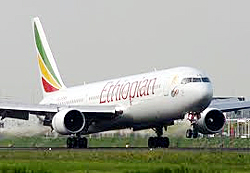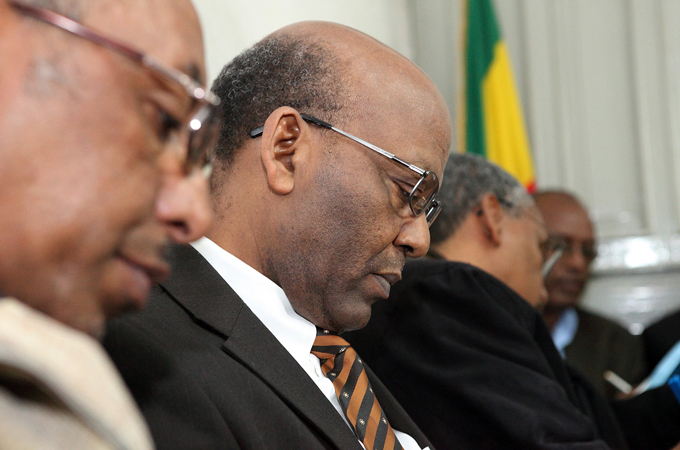The
underperformance of the Ethiopian telecoms sector and the resultant low
bandwidth available in the country is holding back the development of
the local tech scene, according to Markos Lemma, co-founder of
innovation hub iceaddis.
Lemma, who co-founded iceaddis in May 2011, told HumanIPO the tech space in Ethiopia had much potential.
“There is untapped potential and knowledge,” he said. “The ICT educational sector is growing.”
He
said, however: “Even though there is a high potential in the tech space
in Ethiopia, what is very visible right now is the challenges and the
many problems which hold it back.”
He said the main challenge was
the telecommunications sector, which he said slowed down the
acceleration of Ethiopia’s tech scene and meant it did not see the
economic growth evident in other sectors, which came about due to
reforms in spheres such as agriculture and education.
“The
bandwidth capacity of Ethio Telecom is 8.6gbit/s. To compare, Kenya has
8.6Tbit/s and plans to expand to 15Tbit/s,” he said. “So I believe the
main challenge for techies in Ethiopia – and for any small businesses in
the country – is the poor and unreachable service of Ethio Telecom. The
penetration still remains below 2 per cent. About 2.5 million people
are connected to the internet.
Lemma also pinpointed “restrictive regulations” as a challenge to the development of the sector.
“Customs
is one big problem for startups as it is almost impossible to import
innovative and new technologies,” he said. “The banking system is old
fashioned, and unproductive, the most advanced banking services banks
provide is an ATM. There is no mobile money whatsoever.”
Yet,
Lemma believes, if these difficulties can be overcome, Ethiopia has the
potential, as the second most populous country in Africa and one of the
fastest growing economies globally, to compete on a global scale through
ICT.
“There is a huge market,” he said. “So techies can
develop solutions for the local market and still make good revenues.
This will help them to gain momentum in the country and aim big into the
global market. The local market enables the developers to quickly bring
products to the market and make profit.”
He said the country is
already planning on joining the World Trade Organisation (WTO) in 2015,
which he said would expose local solutions to the international market.
“Competing
on a global scale is generally hard for East African companies – as the
playing field isn’t level,” he said. “But the current solutions from
iHub, such as Ushahidi, show that East African companies can indeed
compete in the international market.”
He said there has been some process in assisting the Ethiopian tech sector in recent years.
“The
infrastructure is improved. New road lines and railways are under
construction. This will help the tech scene to grow as these
infrastructure developments increase quality of lives. In the last 10
years the number of public universities increased from one digit number
to over 30. Most colleges now teach computer science, information
technology and related fields. Many skilled techies are coming out of
college and ready to join the market.”
Lemma said the formation
of iceaddis was based on the lack of a place for young Ethiopians to
take their innovative ideas to and connect with each other.
“The
questions were very broad and the only thing we discovered was that
there was no physical space in Addis Ababa for the energetic and high
potential Ethiopian techies,” he said. “So the idea of iceaddis started
there, answering the questions of the tech community – to bring high
potentials together at a nexus point and help them to accelerate their
startup and innovation to bring to the market.”
The hub has a
collaborative open space, dedicated co-working spaces and prototyping
laboratories, while it also supports green tech solutions. It provides
entrepreneurship programmes and training, and, since it is located at a
university, mainly targets university students seeking to open up new
ventures instead of looking for jobs, which Lemma says are “scarce”.
“We
managed to attract and connect the tech communities in the country,” he
said. “We regard this as a big success as this wasn’t the case before
iceaddis was established.
“We’re putting the Ethiopian tech scene
on the map. There is almost no talk about the Ethiopian tech scene, but
iceaddis is dedicated to changing this view, as we have bright and
potential techies in the country.”







 A leading Ethiopian opposition party said in a report Thursday that scores of its members and supporters had been killed, abused or jailed over the past two years.
A leading Ethiopian opposition party said in a report Thursday that scores of its members and supporters had been killed, abused or jailed over the past two years. Brain
drain, also known as human capital flight, is a serious issue in many
parts of the world, as skilled professionals seek out work abroad rather
than returning to work in their home country. Many are driven away by
high unemployment, but issues like political oppression, lack of
religious freedom and simply not being able to earn a big enough
paycheck also play a significant role in exacerbating brain drain. The
phenomenon is not only a serious economic issue (both in that the
country loses workers and the money it put into training them in
Brain
drain, also known as human capital flight, is a serious issue in many
parts of the world, as skilled professionals seek out work abroad rather
than returning to work in their home country. Many are driven away by
high unemployment, but issues like political oppression, lack of
religious freedom and simply not being able to earn a big enough
paycheck also play a significant role in exacerbating brain drain. The
phenomenon is not only a serious economic issue (both in that the
country loses workers and the money it put into training them in 


